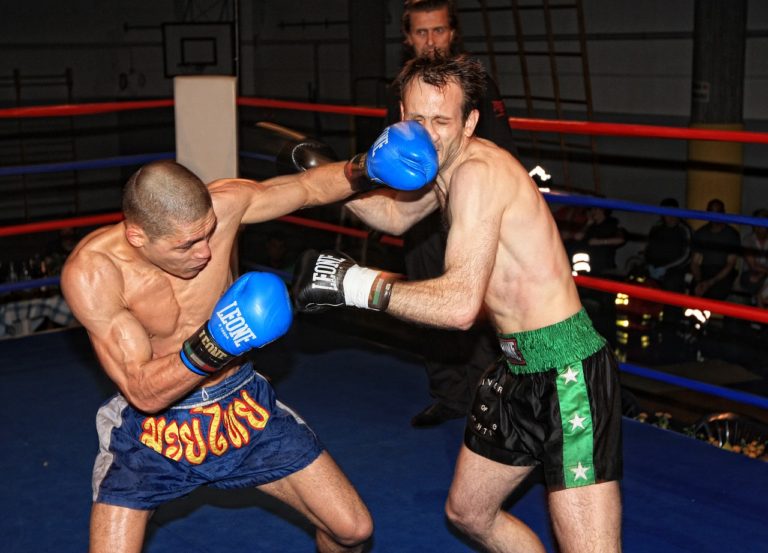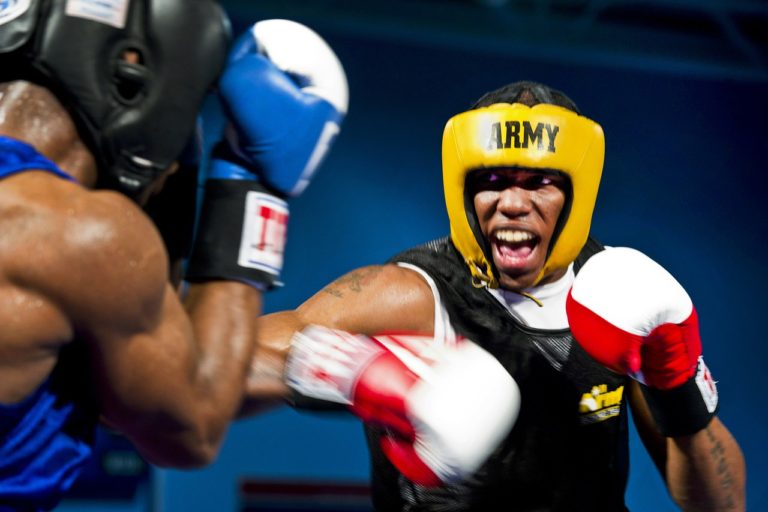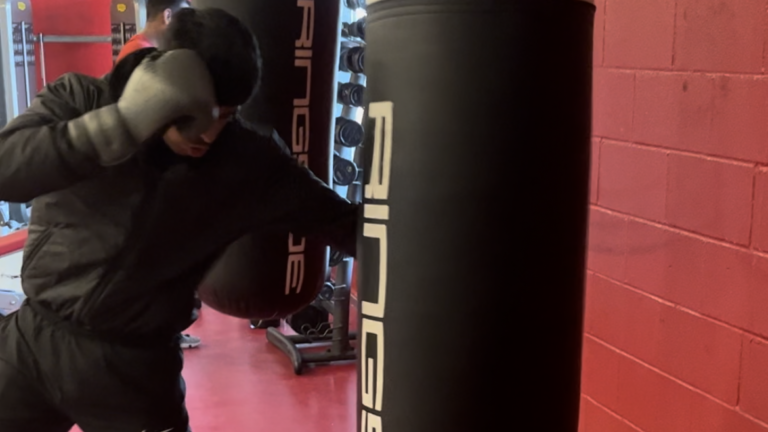Beating a Defensive Boxer – A Complete Guide

Boxing a defensive fighter can be the most tedious and frustrating task in boxing. They are often counter-punchers and want to take a little damage and risks as possible. This means they tend to present very few openings. A good defensive boxer will not only minimize their damage but look to box circles around their opponent in an attempt to frustrate them into making silly mistakes.
Defensive boxers have always been notoriously difficult to beat because of this strategy. This means they can box for longer, maintain better health, and accumulate wins without taking as much damage. If they are inexperienced, hard, calculated pressure will often break open a defensive fighter causing them to expose their chin. However, if they are experienced defensive fighters, then using awkward angles, punch volume, and hand speed can be used to get the better of them, but this is often easier said than done.
Listed below are some of the great defensive fighters we’ve seen grace the ring and their astonishing professional boxing records.
| Fighter | Professional Boxing Record |
| Floyd Mayweather | 50-0 |
| George Benton | 61-13 |
| Pernell Whitaker | 40-4 |
| Charley Burley | 83-12-2 |
| James Toney | 77-10-3 |
| Nicolino Locche | 117-4-14 |
| Willie Pep | 229-11-1 |
While beating a good defensive fighter is often a herculean task, there are some strategies you can implement to try and break them down into creating openings that you can capitalize on.
Using body shots to break defense
Body shots are quite an overlooked strategy. Sometimes, you’ll find that you’re likely to be able to hurt someone to the body rather than the head. In professional boxing, its not uncommon to see fighters get dropped by body shots, especially liver punches. So while certain fighters may have impeccable head defense, their body protection may not be as strong and maybe something you could exploit.
Throwing hard body shots repeatedly often also causes fighters to drop their guards in an attempt to protect their body which then leaves them open. This also will drain the energy from your opponent, causing them to become sloppy or even winded which will increase the amount of time they are exposed.
Using punch volume to break defense
The worst thing you can do against a defensive counter-puncher is box punch-for-punch unless you’re a superior counter-puncher to them. This is because defensive fighters thrive on the small opportunities that are presented when you are bringing the fight to them. Singular attacks will make countering easy for a defensive fighter and allow them to cruise to a comfortable victory.
For instance, when Canelo Alvarez faced Floyd Mayweather in 2013, he attempted to outbox Mayweather. He tried to be patient to lure Mayweather in and used short combinations and singular punches for most of the fight. But being the defensive pugilist he is, this allowed Mayweather to box circles around Alverez for most of the fight. So despite Canelo being an incredibly skillful boxer, his natural style of countering favoured him poorly against someone as sharp and calculated as Floyd Mayweather.
However, not everyone is Floyd Mayweather, and throwing combinations can often break someone’s defense. Especially if you don’t give them time to think. Keep the pressure high, using combinations and feints to keep them guessing on what you’re going to do next. An inherent part of this style will be that you’ll miss a lot of punches but you’re much more likely to land clean shots.
Close the range and get rough
Defensive fighters usually like to box at long range where they are most protected from clinches and dirty boxing. By closing the distance and making the fight rough, defensive fighters will struggle to find the space they need to counter-punch making them less comfortable while nullifying their most useful tools.
This predominantly comes down to the back-footed style that most defensive fighters possess. They like boxing in a large ring where there is plenty of space to move around and evade danger. By cutting off the ring and forcing them into fighting a close-ranged brawl they won’t be as effective with their defense and counters. This can also be a good strategy to tire them out, especially if you’re the bigger fighter. Holding and clinching give you the opportunity to lean on your opponent and push you’re weight onto them which will force them to work harder and hinder their endurance.
Break guard with angles and feints
If someone has a tight guard with both their hands on their chin, using different angles can be a good strategy to land punches. Vasyl Lomachenko does this incredibly well, he uses fast and clever footwork to change angles on his opponent. This means that regardless of whether they have their hands up or down, he is able to create openings. This is because its technically impossible to keep all of the head protected by the gloves all of the time.
By approaching your opponent from a different angle, you’ll be able to see different openings in their defense. Using angles will also force them to adjust to your movements and you’ll have an element of surprise in your attacks.
Feints can also be a good way to break the guard of a defensive fighter, especially if they are inexperienced or nervous. Sometimes they will be overly tenacious with their defense which can cause them to overreact because they are so afraid to get hit. This will in turn create more opportunities for you to land shots.
Brawl instead of Boxing
Most defensive fighters usually don’t want to trade punches, they tend to box with a cold, methodical approach. However, if you take this away from them and force them to fight with emotion, then they are more likely to come forward and attack.
If they aren’t front-footed by nature this may serve them poorly and cause them to make irrational decisions which often leads to bad outcomes on their part. Emotive fighting for calculated boxers is the last thing they want. Defensive fighters are fundamentally thinkers, they usually value their health and wellbeing, so if you can force them to stand and brawl, it could very well play into your favour.
Conclusions
Defensive fighters are arguably the toughest type of opponent in boxing. They’ll usually counter and move for the entire spar or fight until you get frustrated and they can pick you apart. This means that if they are experienced, they’ll be incredibly difficult to outbox because of their unwillingness to take risks and their incredible patience.
Getting in the inside and making the fight rough is often the best strategy with highly technical defensive fighters. This is because unless you’re technically blessed like Lomachenko, using clever footwork, feints, and angles is an incredibly difficult thing to do on the inside.






